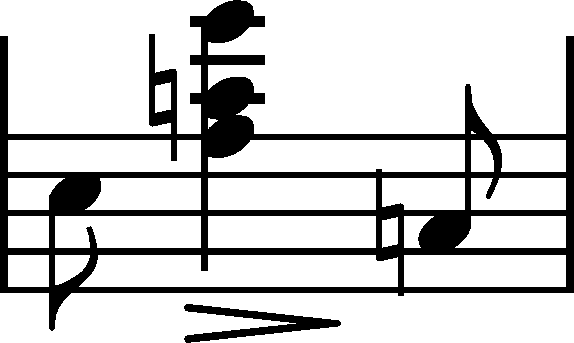



|
b. 15
|
composition: Op. 10 No 5, Etude in G♭ major
..
Lack of e
In A there are visible traces of corrections, perhaps from the following version:
category imprint: Graphic ambiguousness; Differences between sources issues: Inaccuracies in FE , Uncertain notes on ledger lines |
|||||||
|
b. 15
|
composition: Op. 10 No 5, Etude in G♭ major
category imprint: Differences between sources; Corrections & alterations issues: Authentic corrections of FE |
|||||||
|
b. 15
|
composition: Op. 10 No 5, Etude in G♭ major
..
The staccato dots under the quavers were added by Chopin while proofreading FE (→GE,EE). In GE a short accent was applied, moreover, in GE1 (→GE1a) and again in GE5 the mark was moved over the crotchet. category imprint: Differences between sources; Corrections & alterations issues: Long accents , Placement of markings , GE revisions , Authentic corrections of FE |
|||||||
|
b. 16
|
composition: Op. 10 No 5, Etude in G♭ major
..
Lack of the fingering digit over the 1st note is most probably an error of the engraver of FE (→GE,EE). Moreover, the status of the last digit in the editions is also not entirely clear in this bar. In A there are traces of a correction in this place, which could have been considered as '1' (perhaps Chopin started writing another a category imprint: Interpretations within context; Differences between sources; Corrections & alterations issues: Errors in FE , Corrections in A , Authentic corrections of FE |
|||||||
|
b. 16
|
composition: Op. 10 No 5, Etude in G♭ major
..
The category imprint: Differences between sources issues: EE revisions , Inaccuracies in FE , GE revisions , Authentic corrections of FE , No pedal release mark |




 1 in the editions is, according to us, a result of a misreading of
1 in the editions is, according to us, a result of a misreading of 











 in
in 
 in
in 